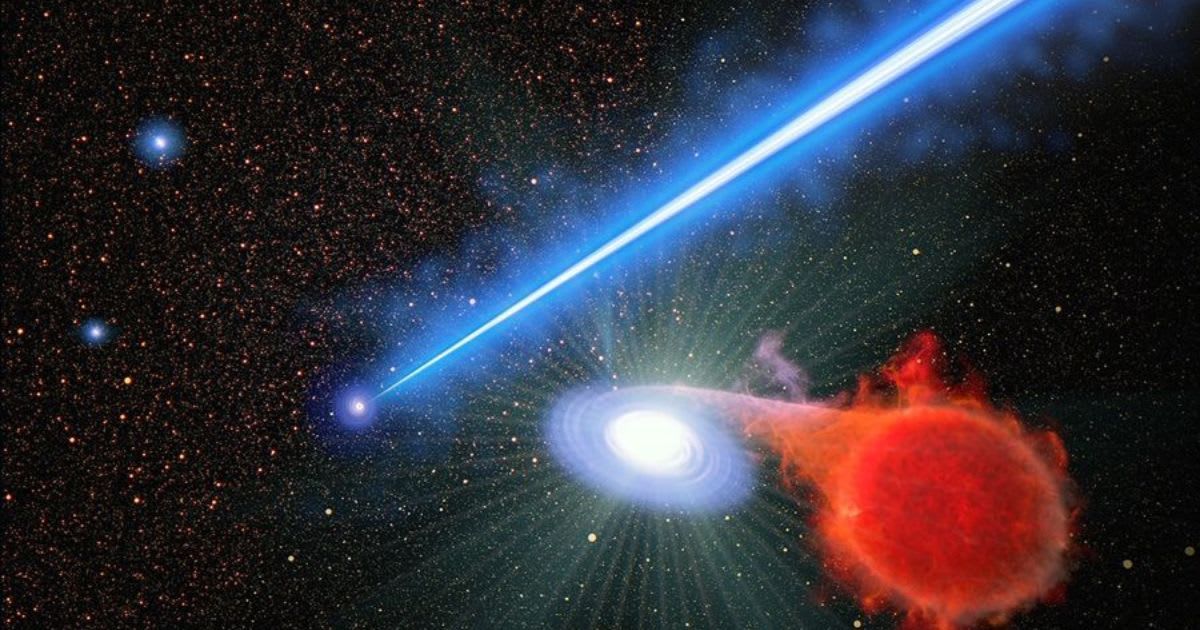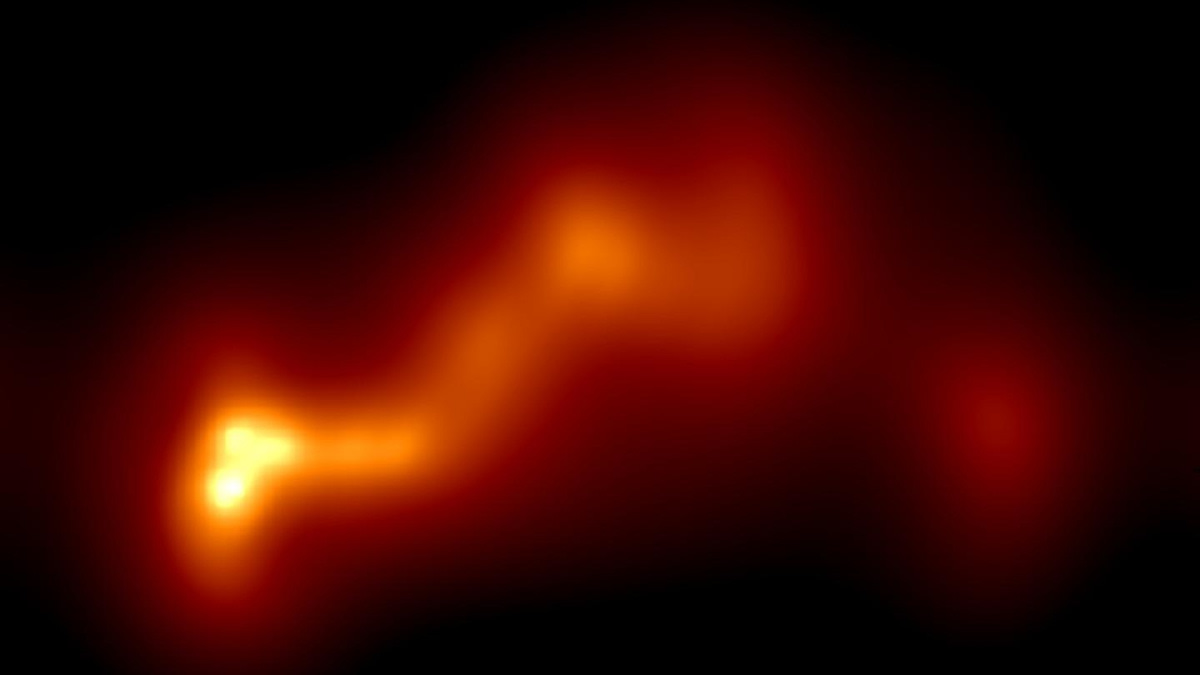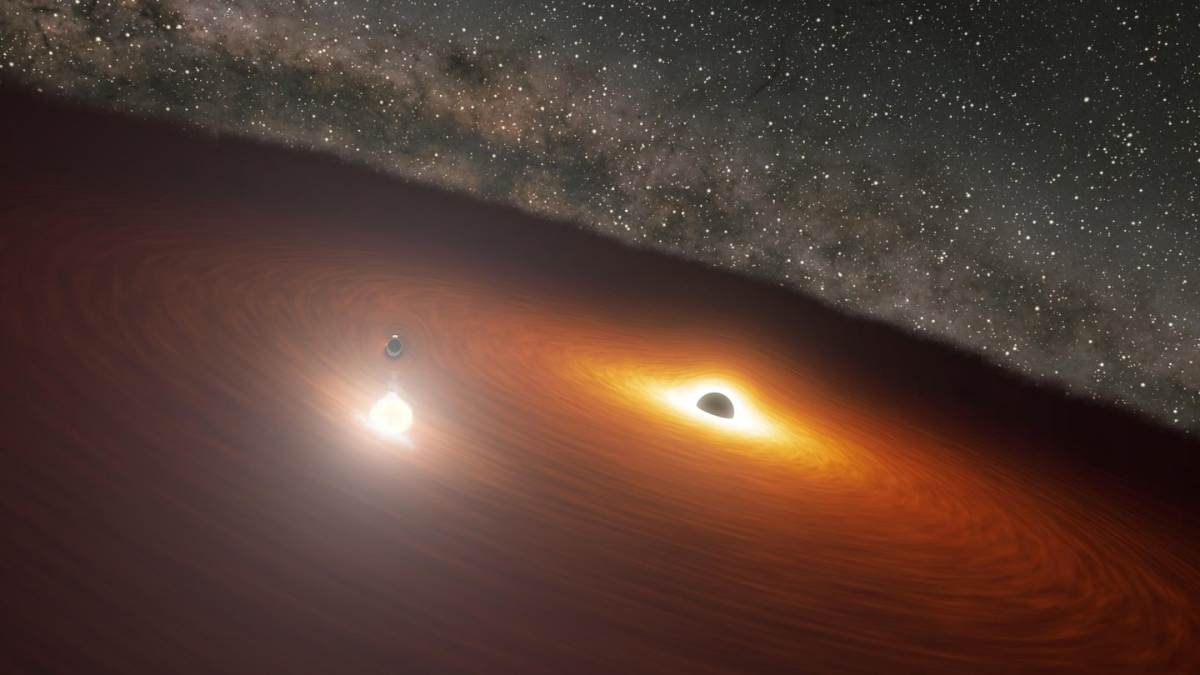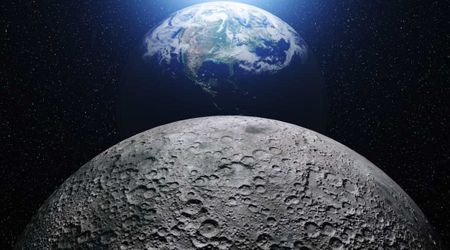Groundbreaking image reveals sharply curved 'ribbon-like' plasma jet at mysterious OJ 287 galaxy's center

A groundbreaking image of the OJ 287 galaxy has revealed a striking curved plasma jet emanating from its core, offering compelling new evidence for the long-suspected merger of two supermassive black holes within the distant system. This research, published in the journal Astronomy & Astrophysics, involved contributions from institutions across Germany, Italy, Russia, Spain, South Korea, and the US and received support from various research and funding organizations, as per Heidelberg University.

For over a century and a half, the OJ 287 galaxy has captivated and perplexed astronomers due to its erratic brightness fluctuations. These anomalies have led scientists to theorize the presence of a binary supermassive black hole system on the cusp of merging. Now, an international team, spearheaded by Dr Efthalia Traianou of Heidelberg University, has achieved an unparalleled view into this galactic heart.

The revolutionary image, captured using a space-based radio telescope, showcases a never-before-seen, sharply curved segment of the plasma jet. This unprecedented level of detail is expected to provide critical insights into the extreme conditions surrounding these colossal cosmic devourers. OJ 287's core is characterized by intense activity and remarkable luminosity, fueled by central black holes. These black holes consume surrounding matter and, in turn, eject colossal plasma jets composed of cosmic radiation, heat, heavy atoms, and magnetic fields. Dr Traianou, a postdoctoral researcher, emphasized, “We have never before observed a structure in the OJ 287 galaxy at the level of detail seen in the new image.”

The new image, peering deep into the galaxy's center, depicts the jet as a sharply curved, ribbon-like structure. This revelation promises new understanding of the jet's composition and behaviour. Astonishingly, some regions within the jet register temperatures exceeding ten trillion Kelvin, indicative of immense energy and motion unleashed in the vicinity of a black hole. Researchers also observed the formation, propagation, and collision of a new shock wave along the jet, linking it to a trillion-electron-volt energy event detected as an unusual gamma-ray measurement in 2017.
The high-resolution radio image was acquired through a ground-space radio interferometer. This colossal virtual telescope, with a diameter five times that of Earth, was formed by combining a ten-meter antenna from the RadioAstron mission orbiting Earth (onboard the Spektr-R satellite) with a network of 27 ground observatories globally. The exceptional resolution is a direct result of the vast distances between these individual radio observatories, utilizing a measurement method that leverages the wave nature of light and the overlapping of waves.
This interferometric image strongly supports the hypothesis of a binary supermassive black hole system within OJ 287. It also offers vital data on how the movements of such black holes influence the shape and orientation of the emitted plasma jets. “Its special properties make the galaxy an ideal candidate for further research into merging black holes and the associated gravitational waves,” stated Efthalia Traianou.
Located approximately four billion light-years away, OJ 287 is one of the nearest examples of a blazar, a highly active galactic core. Its remarkable brightness even allows it to be observed with large amateur telescopes, with observations of OJ 287 stretching back to the late 1800s, according to Space.com. These historical observations reveal a peculiar pattern: the galaxy appears to brighten every 12 years. In 2014, University of Turku Ph.D. student Pauli Pihajoki proposed that this recurring brightening is caused by a second, less massive black hole orbiting and interacting with the primary black hole. According to this theory, the secondary black hole's elongated orbit brings it into proximity with the primary only once every 12 years.









